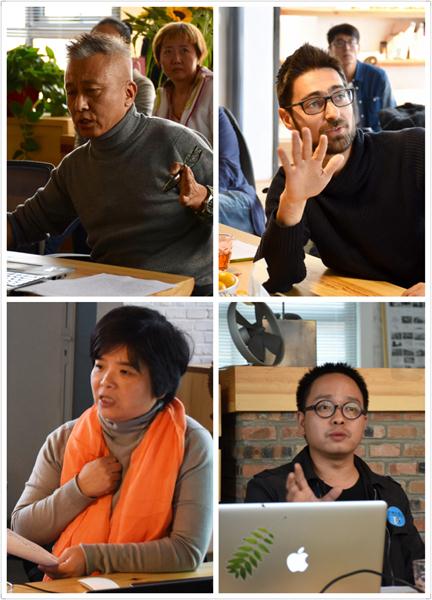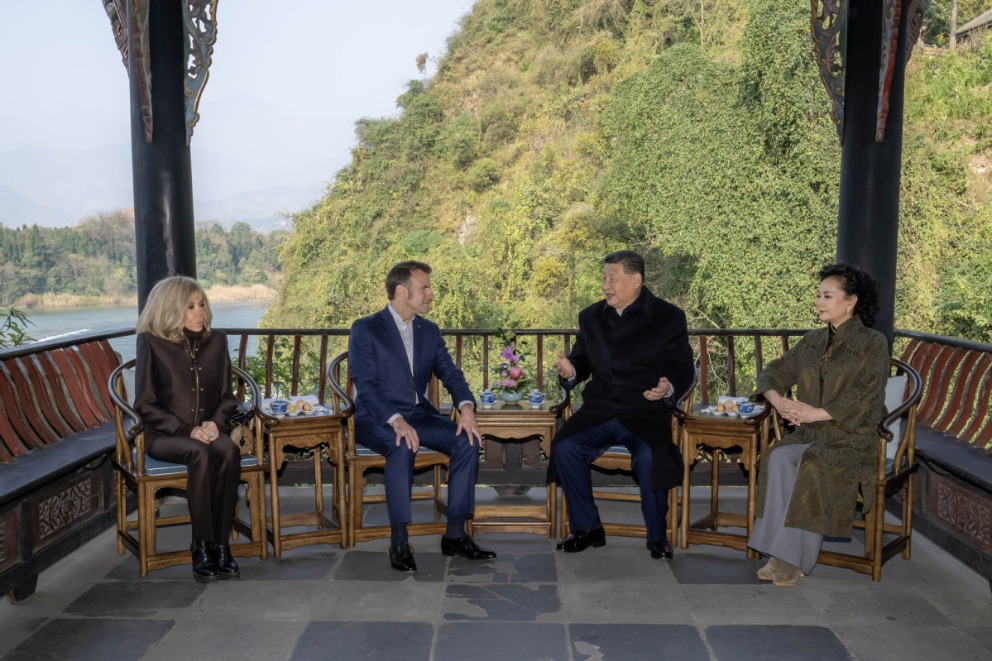Ecological designers discuss how to revitalize villages
By Song Jingyi | chinadaily.com.cn | Updated: 2016-10-12 15:09
 |
| Four design specialists discuss about how to revitalize villages. [Photo provided to chinadaily.com.cn] |
A dialogue between ecological design specialists and scholars on new rural development was held here in Beijing on Monday. It's one panel of the 2016 Beijing International Design Week, one of the important activities is the 'New Countryside Construction' joint exhibition in the Sun River 52.
The exhibition was organized by the World Rural Development Committee (WRDC), the Rural Culture Renewal Volunteers Association (RCRA), the Beijing Culture Heritage Protection Forum called C Salon and New Countryside Society, hosted by Laozhuang Architect Office and Original Architect Office.
Zhuang Hong, professor at the School of Design and Arts, Beijing Institute of Technology, sponsor of the New Countryside Architect Club, shared his opinions on the spirit of exploring the value of villages and the significance of inheritance in the local context.
"One of the problems in China's rural areas is that their huge ecological resources have been neglected for a long time, and to change its backwardness may be intrusive. We ought to earnestly penetrate into the countryside to find its unique resources and cultural heritage," said Prof.Zhuang.
Zhuang named the three steps to rehabilitate rural areas. The first is protection. It means to preserve the original form of the architecture to the greatest extent. The second is optimization, which means to solve the current architectural problems and improve the quality of heritage. The third is user-friendly code, which refers to using some biotechnological methods to better facilitate daily life in the modern age.
Nihegou is an ordinary village in Jiaxian County in northern Shaanxi Province. The jujube yard there was entered on the Globally Important Agricultural Heritage Systems (GIAHS) list by the Food and Agriculture Organization of the United Nations in 2014 for its innovative and sustainable system.
 |
| 'New Countryside Construction' joint exhibition. [Photo/Song Jingyi] |
Tang Yong, a passionate young designer at Original Architect Office, who is also one of the leaders of Nihegou Rural Reform Project, illustrated the design planning details.
"For more than a thousand years, the mountainous and hydrogenous environment have jointly constructed its unique and pristine ecological environment. But unfortunately, the population of the whole village is only 100 or so, most of whom are the elderly and kids. Many local young villagers migrate to big cities in hope of a better life. Every year, a lot of precious old local caves are deserted," Tang said.
To preserve tradition, a group of rural cultural service volunteers and Tang's design teams work closely with the local villagers. The whole project was finally completed after two years of in-depth field research, design planning and prudent implementation.
In the dialogue, specialists debate many design details on how to balance preserving traditional architectural design and satisfying the necessities of daily life in the modern age.
Prof. Zhuang said, "I'm looking for ways to entice more people to come back and stay in the countryside. I want to build a bridge to promote interaction between cities and countryside. Rural reform needs government policy support, but it also needs contributions from individuals."
























